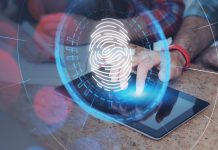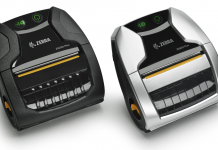Tim Dunn, Commercial Director at ValidSoft discusses the benefits of deploying voice biometric technology and how it can transform modern call centres
Contact centres are facing an ever-growing challenge. In an environment of skyrocketing rates of contact centre fraud (growing by 350% over the past four years) paired with increasing customer expectations, the industry is in desperate need of transformation with regards to contact-centre security. Security has become a focus for many industries in recent times, and contact centres are a prime target for fraudsters.
Modern contact centres, typically reliant on outdated and vulnerable Knowledge-Based Authentication (KBA), such as passwords or memorable dates, can significantly increase security by utilising voice biometric technology. Furthermore, this change would have a dramatic positive impact in terms of a reduction in call times, decrease in call abandonments and overall improvement in the customer experience, not to mention significant operational cost reductions.
Security: A key focus for contact centres
As companies tighten their cyber security infrastructure in the wake of widespread risks and regulatory demands such as GDPR, fraudsters are beginning to turn their attention to contact centres. In a recent report, almost a third of those surveyed identified contact centres as the primary source of account takeover attacks. This is because most cyber security solutions don’t protect against contact centres’ biggest vulnerability: social engineering. Social engineering is the practice of manipulating a company’s employees into handing over access or information.
This is usually actioned by someone who can easily access a piece of personal information, such as a name and date of birth, and then creates a story in order to gain access to an account that doesn’t belong to them. Social engineering attacks are simple but incredibly effective as they target not only systems but human nature and manipulate an employee’s desire to help their customers. This is one of the major weaknesses of KBA. Every large-scale data breach, an almost weekly occurrence these days, puts more and more personal information in the hands of fraudsters to use against KBA solutions.
As these attacks continue to become more frequent, contact centres need to implement ways to defend themselves. Security breaches not only cost companies money through potential fines, but also costs them their reputation and the trust of their customers – something very hard to earn back. As hackers focus more on ways to exploit contact centre vulnerabilities, contact centres must respond by focussing on improving their security, especially secure authentication, but not at the expense of the customer experience. Implementing voice biometrics offers such a solution. A customer’s information can be easy to find; their voice, however, cannot. It must be remembered that information, supposedly secret, is only a proxy for a person’s identity. It identifies only that the caller is in possession of certain information. Only precision voice biometrics actually verify the real, inherent human identity of a caller.
The voice biometrics transformation
Voice biometrics processes the audio waveform generated when we speak and extracts the key features that are unique to each speaker. From this, a voice signature is built for each customer enrolled on the system and used to authenticate the individual. No need for insecure and frustrating security questions. When a customer makes a call to an operator at a contact centre, the voice biometric technology will easily and quickly verify the individual is indeed whom they claim to be, by comparing their voice to the stored sample on the system.
One of the major problems facing modern contact centres is the time it takes to authenticate a caller which, ultimately, affects the whole contact centre workflow, cost models and efficiency when callers are unable to reach an operator in a timely fashion. Whereas KBA can take anywhere from 40 seconds to over a minute to authenticate the caller, time not spent on customer fulfilment, voice biometrics can authenticate a caller in between 2 and 6 seconds, without having to remember any passwords or PINs. Not only does this dramatically reduce a key contact-centre metric, Average Call Handling (ACH) time, it also reduces abandonments due to callers’ inability to answer questions and results in a far more positive user experience and lower cost for the contact centre operator. More calls can be handled in less time or using fewer agents, resulting in overall cost savings.
The contact centre of the future
As the contact centres of yesterday have transformed into the unified communications platforms of today, new digital channels and the emergence of Artificial Intelligence (AI) and Machine Learning (ML) complementing human interaction, is changing not only the way we interact with what is now the contact centre, but how we identify ourselves to it.
Customers today are increasingly expecting a sleeker, largely frictionless interaction on the occasions they need to speak with their service providers. Waiting in endless queues and being asked seemingly irrelevant questions does not fit the modern unified communications paradigm.
Biometric authentication is now commonplace with smartphones and apps, and increasingly so with other digital channels such as web applications and automated Interactive Voice Response (IVR) systems, themselves increasingly being driven by AI and ML technologies. Voice biometrics is the only biometric that is truly omnichannel and can provide the same customer experience across all channels. As voice is now generally regarded as the most efficient human/machine interface, voice biometrics is the invisible strategic security layer to protect the genuine customer and deny the fraudsters.
The modern contact centre should be no different, as we can finally say goodbye to one of the most frustrating, costly and insecure authentication methods ever adopted and instead provide the security, ease-of-use and cost-effectiveness that voice biometrics provides.
Editor's Recommended Articles
-
Must Read >> The role of biometrics in healthcare














